($56, Jeanne-Marie de Champs Selection):  This lieu-dit, entitled only to a village appellation, lies across the road, but downhill from the Grand Cru Bienvenue-Bâtard-Montrachet. Even in Jean Pascal’s talented hands, this village wine is not in the Grand Cru category, but it is more impressive than many producers’ premier cru — and at a far more attractive price. … Read more
This lieu-dit, entitled only to a village appellation, lies across the road, but downhill from the Grand Cru Bienvenue-Bâtard-Montrachet. Even in Jean Pascal’s talented hands, this village wine is not in the Grand Cru category, but it is more impressive than many producers’ premier cru — and at a far more attractive price. … Read more
Category Archives: Reviews
Domaine Michel Bouzereau et Fils, Meursault (Burgundy, France) “Les Grands Charrons” 2018
($68, Jeanne-Marie de Champs Selection):  It’s hard to go wrong with the wines from Domaine Michel Bouzereau, a leading name in Meursault. Here are my notes for this wine from a visit in November 2019: “Good as most people’s 1er cru. … Read more
It’s hard to go wrong with the wines from Domaine Michel Bouzereau, a leading name in Meursault. Here are my notes for this wine from a visit in November 2019: “Good as most people’s 1er cru. … Read more
Domaine Paul Pernot et ses Fils, Bourgogne Blanc Côte d’Or (Burgundy, France) 2019
($30, Jeanne-Marie de Champs Selection):  Domaine Paul Pernot, one of the top producers in Puligny-Montrachet, opts to use the new appellation, Bourgogne Côte d’Or, for this wine that they formerly labeled as Bourgogne Blanc. The new appellation requires that the grapes come exclusively from the Côte d’Or, the heart of Burgundy.… Read more
Domaine Paul Pernot, one of the top producers in Puligny-Montrachet, opts to use the new appellation, Bourgogne Côte d’Or, for this wine that they formerly labeled as Bourgogne Blanc. The new appellation requires that the grapes come exclusively from the Côte d’Or, the heart of Burgundy.… Read more
Domaine Lamarche, Vosne-Romanée Premier Cru (Burgundy, France) Les Chaumes 2018
($140, Jeanne-Marie de Champs Selection): 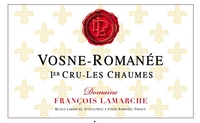 Vosne-Romanée could be considered the most revered village in Burgundy. Its wines, even those sporting just a village appellation, carry hefty price tags. And with the 25 percent tariffs, the prices are truly extraordinary. That said, this is a pretty extraordinary wine. … Read more
Vosne-Romanée could be considered the most revered village in Burgundy. Its wines, even those sporting just a village appellation, carry hefty price tags. And with the 25 percent tariffs, the prices are truly extraordinary. That said, this is a pretty extraordinary wine. … Read more
Rodney Strong Vineyards, Alexander Valley (Sonoma County, California) “Symmetry” Meritage 2016
($55):  Symmetry, according to Rodney Strong’s website, means balance. And I must admit, this wine is aptly named. It’s a suave complex Cabernet Sauvignon-dominant (70%) blend of five Bordeaux varieties. Roughly equal amounts of Merlot, Malbec, Cabernet Franc and Petit Verdot fill out the blend. … Read more
Symmetry, according to Rodney Strong’s website, means balance. And I must admit, this wine is aptly named. It’s a suave complex Cabernet Sauvignon-dominant (70%) blend of five Bordeaux varieties. Roughly equal amounts of Merlot, Malbec, Cabernet Franc and Petit Verdot fill out the blend. … Read more
Fanetti – Tenuta S. Agnese, Vino Nobile di Montepulciano DOCG (Tuscany, Italy) Riserva 2015
($33, Enotec Imports, Inc):  Fanetti, one of the great names for Vino Nobile di Montepulciano, has produced a fabulous 2015 Riserva from their Tenuta S. Agnese estate. Traditionally framed, that is, not all gussied up with oak and over ripe fruit, the dark cherry-like fruit of Sangiovese shines. … Read more
Fanetti, one of the great names for Vino Nobile di Montepulciano, has produced a fabulous 2015 Riserva from their Tenuta S. Agnese estate. Traditionally framed, that is, not all gussied up with oak and over ripe fruit, the dark cherry-like fruit of Sangiovese shines. … Read more
Buli, Toscana IGT (Tuscany, Italy) “Estate 44” 2016
($20, Dark Star Imports):  Estate 44 pays tribute to the Allied soldiers, including the owner’s father, who liberated Tuscany in the summer of 1944. A blend of Sangiovese (60%) Cabernet Sauvignon (20%) and equal amounts of Syrah and Merlot, it is more muscular than Buli’s 515 bottling, but has the same grace, suaveness and structure. … Read more
Estate 44 pays tribute to the Allied soldiers, including the owner’s father, who liberated Tuscany in the summer of 1944. A blend of Sangiovese (60%) Cabernet Sauvignon (20%) and equal amounts of Syrah and Merlot, it is more muscular than Buli’s 515 bottling, but has the same grace, suaveness and structure. … Read more
Buli, Toscana IGT (Tuscany, Italy) Sangiovese “515” 2016
($20, Dark Star Imports):  Robert Buly, an American who owns Buli, was drawn to Italy by heritage: his father married an Italian woman from Tuscany soon after WWII ended. On their website, he jokes that his father met his mother while on the search for red wine to drink. … Read more
Robert Buly, an American who owns Buli, was drawn to Italy by heritage: his father married an Italian woman from Tuscany soon after WWII ended. On their website, he jokes that his father met his mother while on the search for red wine to drink. … Read more
Piper-Heidsieck, Champagne (France) Brut Cuvée NV
($45, Folio Fine Wine Partners):  Founded in 1785, this venerable Champagne firm passed into the hands of the Descours family about a decade ago. Its non-vintage Brut has since taken a leap in quality. I remember Piper-Heidsieck as an ordinary Champagne a decade ago, lean and angular. … Read more
Founded in 1785, this venerable Champagne firm passed into the hands of the Descours family about a decade ago. Its non-vintage Brut has since taken a leap in quality. I remember Piper-Heidsieck as an ordinary Champagne a decade ago, lean and angular. … Read more
Domaine Bart, Marsannay (Burgundy, France) Clos du Roy 2018
($58, Jeanne-Marie de Champs Selection):  Domaine Bart is an A-list producer. Of course, their Grand Cru Bonnes Mares and Charmes-Chambertin are stunning. But, if you are looking for something that does not require taking out a mortgage before purchasing, look to their array of wines from Marsannay, a sleepy village north of Gevrey-Chambertin. … Read more
Domaine Bart is an A-list producer. Of course, their Grand Cru Bonnes Mares and Charmes-Chambertin are stunning. But, if you are looking for something that does not require taking out a mortgage before purchasing, look to their array of wines from Marsannay, a sleepy village north of Gevrey-Chambertin. … Read more
Domaine René Leclerc, Gevrey-Chambertin (Côte de Nuits, Burgundy, France) Clos Prieur 2018
($77, Jeanne-Marie de Champs Selection): 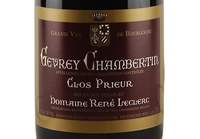 The Clos Prieur vineyard, which is just across the road from Mazi-Chambertin, a Grand Cru, covers two appellations. The upper part is Premier Cru and lower part carries a village appellation. But once again, producer can trump geography. … Read more
The Clos Prieur vineyard, which is just across the road from Mazi-Chambertin, a Grand Cru, covers two appellations. The upper part is Premier Cru and lower part carries a village appellation. But once again, producer can trump geography. … Read more
Château de la Maltroye, Chassagne Montrachet 1er Cru (Burgundy, France) Clos du Château de la Maltroye 2018
($80, Jeanne-Marie de Champs Selection):  This 2018 Clos du Château de la Maltroye, a monopole of the Château de la Maltroye, is one of the best red wines from Chassagne-Montrachet I’ve ever had. It’s the epitome of power and grace. Savory elements complement gorgeous dark fruity ones. … Read more
This 2018 Clos du Château de la Maltroye, a monopole of the Château de la Maltroye, is one of the best red wines from Chassagne-Montrachet I’ve ever had. It’s the epitome of power and grace. Savory elements complement gorgeous dark fruity ones. … Read more
Gilles Lafouge, Auxey-Duresses 1er Cru (Burgundy, France) Les Duresses Jeanne-Marie de Champs Selection 2018
($43):  With prices of Burgundy having gone through the roof, it’s a delight to find one that’s affordable, at least by Burgundy standards. As I’ve long maintained, villages off the beaten path, such as Auxey-Duresses which sits behind Meursault, and talented producers who, for whatever reason, have never gotten the praise they deserve, like Gilles Lafouge, is the combination consumers should seek out. … Read more
With prices of Burgundy having gone through the roof, it’s a delight to find one that’s affordable, at least by Burgundy standards. As I’ve long maintained, villages off the beaten path, such as Auxey-Duresses which sits behind Meursault, and talented producers who, for whatever reason, have never gotten the praise they deserve, like Gilles Lafouge, is the combination consumers should seek out. … Read more
Merry Edwards Winery, Sonoma Coast (Sonoma County, California) Pinot Noir 2018
($54):  Changes abound at Merry Edwards Winery, one of California’s leading Pinot Noir producers. In 2019, Louis Roederer, the Champagne house, purchased the winery. With the 2018 vintage, Heidi von der Mehden, who worked with Merry Edwards since 2015, took the reins as winemaker. … Read more
Changes abound at Merry Edwards Winery, one of California’s leading Pinot Noir producers. In 2019, Louis Roederer, the Champagne house, purchased the winery. With the 2018 vintage, Heidi von der Mehden, who worked with Merry Edwards since 2015, took the reins as winemaker. … Read more
Sullivan Rutherford Estate, Rutherford, Napa Valley (California) Cabernet Sauvignon Estate 2017
($110):  This is, in a word, a powerhouse. But along with all the deep black fruit there’s an appealing tar-like mineral and earthy component. Substantial but not intrusive tannins support the blend of Cabernet Sauvignon (87 percent) and Petit Verdot. A youthful wine, it needs to sit in the glass to appreciate its complexity. … Read more
This is, in a word, a powerhouse. But along with all the deep black fruit there’s an appealing tar-like mineral and earthy component. Substantial but not intrusive tannins support the blend of Cabernet Sauvignon (87 percent) and Petit Verdot. A youthful wine, it needs to sit in the glass to appreciate its complexity. … Read more
Merry Edwards Winery, Russian River Valley (Sonoma County, California) Pinot Noir 2018
($60):  The riper and deeper Merry Edwards Russian River Valley bottling, whose fruit comes from a variety of vineyards in that warmer AVA, is a fascinating contrast to their Sonoma Coast bottling. A weightier wine with black rather than red fruit tones, the Russian River Valley Pinot Noir is juicy and well within bounds despite a 14.5 percent-stated alcohol. … Read more
The riper and deeper Merry Edwards Russian River Valley bottling, whose fruit comes from a variety of vineyards in that warmer AVA, is a fascinating contrast to their Sonoma Coast bottling. A weightier wine with black rather than red fruit tones, the Russian River Valley Pinot Noir is juicy and well within bounds despite a 14.5 percent-stated alcohol. … Read more
Merry Edwards Winery, Russian River Valley (Sonoma County, California) Pinot Noir Klopp Ranch 2018
($73):  The floral 2018 Klopp Ranch Pinot Noir displays a gorgeous, layered complexity, with minerality and dark fruitiness intertwined. It conveys far more mineral-like nuances than the Merry Edwards Russian River Valley Pinot, reflecting the focus of a single vineyard. Hefty intensity without being over the top coupled with suave tannins and an engaging bitterness in the finish make it hard to resist now.… Read more
The floral 2018 Klopp Ranch Pinot Noir displays a gorgeous, layered complexity, with minerality and dark fruitiness intertwined. It conveys far more mineral-like nuances than the Merry Edwards Russian River Valley Pinot, reflecting the focus of a single vineyard. Hefty intensity without being over the top coupled with suave tannins and an engaging bitterness in the finish make it hard to resist now.… Read more
Merry Edwards Winery, Russian River Valley (Sonoma County, California) Pinot Noir Meredith Estate 2018
($80):  Unlike the Merry Edwards Klopp Ranch and Olivet Lane Pinot Noirs, the youthful 2018 Meredith Estate displays toasty oak flavors but little else initially. However, befitting a youthful, tightly wound wine, its considerable charms emerge over time. Denser and more concentrated than the other two, it remains balanced and within bounds. … Read more
Unlike the Merry Edwards Klopp Ranch and Olivet Lane Pinot Noirs, the youthful 2018 Meredith Estate displays toasty oak flavors but little else initially. However, befitting a youthful, tightly wound wine, its considerable charms emerge over time. Denser and more concentrated than the other two, it remains balanced and within bounds. … Read more
Merry Edwards Winery, Russian River Valley (Sonoma County, California) Pinot Noir Olivet Lane 2018
($72):  The dark and brooding 2018 Olivet Lane Pinot Noir is amazingly refined, especially considering its concentration. Less floral and fragrant than the Klopp Ranch, it expands and explodes as it sits in the glass. Initially, black fruit flavors predominate, but with air and time, savory notes appear and take over. … Read more
The dark and brooding 2018 Olivet Lane Pinot Noir is amazingly refined, especially considering its concentration. Less floral and fragrant than the Klopp Ranch, it expands and explodes as it sits in the glass. Initially, black fruit flavors predominate, but with air and time, savory notes appear and take over. … Read more
Jean Féray et Fils, Savigny-les-Beaune (Burgundy, France) “Sous La Cabotte” 2018
($40, Jeanne-Marie de Champs Selection):  The 2018 vintages produced some charming red Burgundies, some of which, such as this one, are delicious now. Féray’s has wonderful depth for a village wine, reflecting the ripeness of the grapes due to the warmth of the vintage. … Read more
The 2018 vintages produced some charming red Burgundies, some of which, such as this one, are delicious now. Féray’s has wonderful depth for a village wine, reflecting the ripeness of the grapes due to the warmth of the vintage. … Read more
Catena Zapata, Mendoza (Argentina) “Nicolás Catena Zapata” 2016
($99, Winebow):  There is no question that the Catena family is among the leading producers in Argentina — and perhaps the single leader of the pack. Nicolás Catena brought Argentine wines into the modern area by discovering what is universally accepted now: planting vines at higher altitudes in warm climates reduces the likelihood of harvesting over ripe grapes and making jammy wines. … Read more
There is no question that the Catena family is among the leading producers in Argentina — and perhaps the single leader of the pack. Nicolás Catena brought Argentine wines into the modern area by discovering what is universally accepted now: planting vines at higher altitudes in warm climates reduces the likelihood of harvesting over ripe grapes and making jammy wines. … Read more
Champagne Devaux, Champagne (France) “Augusta” Brut NV
($40, Seaview Imports):  The Augusta refers to Augusta-Maria Herbin, Devaux’s wife, another widow of Champagne, who led the firm from 1879 to 1895. Family ownership ended in 1987, when, according to their website, it passed to the Union Auboise, now Groupe Vinicole Champagne Devaux, a co-operative. … Read more
The Augusta refers to Augusta-Maria Herbin, Devaux’s wife, another widow of Champagne, who led the firm from 1879 to 1895. Family ownership ended in 1987, when, according to their website, it passed to the Union Auboise, now Groupe Vinicole Champagne Devaux, a co-operative. … Read more
Charles Heidsieck, Champagne (France) “Réserve” Brut NV
($69, Folio Fine Wine Partners):  This is a fabulously complex and elegant Champagne. Yes, it’s pricey for a non-vintage Champagne, but I think it’s worth it. The website says that their non-vintage wine is an equal blend of all three varieties, Chardonnay, Pinot Noir and Pinot Meunier, that has been aged on the lees for three years. … Read more
This is a fabulously complex and elegant Champagne. Yes, it’s pricey for a non-vintage Champagne, but I think it’s worth it. The website says that their non-vintage wine is an equal blend of all three varieties, Chardonnay, Pinot Noir and Pinot Meunier, that has been aged on the lees for three years. … Read more
Naumes Family Vineyards, Rouge Valley (Oregon) Pinot Noir Estate, “Pommard Clone” 2017
($40):  If the Naumes Pinot Noir Clone 667 was the weight-lifter, this one is the ballerina. Light in color and on the palate, it dances on the palate. It’s a captivating lighter style of Pinot Noir. If you prefer the Clone 667, you won’t be enthralled by this one and vice-versa. … Read more
If the Naumes Pinot Noir Clone 667 was the weight-lifter, this one is the ballerina. Light in color and on the palate, it dances on the palate. It’s a captivating lighter style of Pinot Noir. If you prefer the Clone 667, you won’t be enthralled by this one and vice-versa. … Read more
Naumes Family Vineyards, Rouge Valley (Oregon) Pinot Noir Estate, “Clone 667” 2017
($40):  I won’t get into the scientific definition of a clone as it relates to grape varieties. Suffice it to say that in this case it’s a Pinot Noir with unique qualities. The wine certainly is very different from their blended Pinot Noir, showing more fruit, more concentration and fewer earthy flavors. … Read more
I won’t get into the scientific definition of a clone as it relates to grape varieties. Suffice it to say that in this case it’s a Pinot Noir with unique qualities. The wine certainly is very different from their blended Pinot Noir, showing more fruit, more concentration and fewer earthy flavors. … Read more
Naumes Family Vineyards, Rouge Valley (Oregon) “Tanto Manta” 2017
($40):  This fifty-fifty blend of Tempranillo and Grenache marries the two beautifully. The Tempranillo provides structure and minerals while the Grenache contributes a floral fruitiness. More approachable than the straight Tempranillo at this stage, it would be a good choice with a hearty pasta dish tonight.… Read more
This fifty-fifty blend of Tempranillo and Grenache marries the two beautifully. The Tempranillo provides structure and minerals while the Grenache contributes a floral fruitiness. More approachable than the straight Tempranillo at this stage, it would be a good choice with a hearty pasta dish tonight.… Read more
Naumes Family Vineyards, Rouge Valley (Oregon) Malbec 2017
($35):  Full disclosure: Malbec is not my favorite wine because too often it is just a big monotonic red wine. So, I was shocked when I tasted this one. There’s lots going on — fruit, to be sure, but smokey and earthy nuances peek out as well. … Read more
Full disclosure: Malbec is not my favorite wine because too often it is just a big monotonic red wine. So, I was shocked when I tasted this one. There’s lots going on — fruit, to be sure, but smokey and earthy nuances peek out as well. … Read more
Château des Jacques, Moulin-à-Vent (Beaujolais, France) 2017
($26, Kobrand Wine & Spirits): 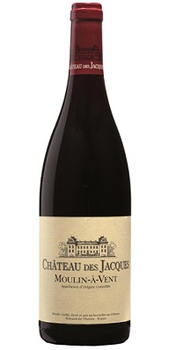 Beaujolais is still trying to remind people it produces real, top-notch wine, not just “nouveau.” Well, Jadot’s Château des Jacques is a convincing exhibit. For over 20 years, Château des Jacques has been instrumental in showing the diversity of wines from within the crus of Beaujolais, those ten named villages, such as Moulin-à-Vent, whose wines are so distinctive that they may not even carry the name Beaujolais on the label. … Read more
Beaujolais is still trying to remind people it produces real, top-notch wine, not just “nouveau.” Well, Jadot’s Château des Jacques is a convincing exhibit. For over 20 years, Château des Jacques has been instrumental in showing the diversity of wines from within the crus of Beaujolais, those ten named villages, such as Moulin-à-Vent, whose wines are so distinctive that they may not even carry the name Beaujolais on the label. … Read more
Gallina de Piel, Ribeiro (Galicia, Spain) “Manar dos Seixas” 2018
($37, Bluest Sky Group): 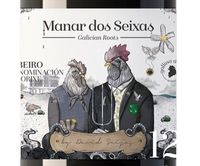 Two sommeliers, one of whom, David Seijas, worked at El Bulli, named the best restaurant in the world five times by Restaurant magazine, founded Gallina de Piel (which transliterates as “chicken skin” from Spanish, the equivalent of “goose bumps” in colloquial English).… Read more
Two sommeliers, one of whom, David Seijas, worked at El Bulli, named the best restaurant in the world five times by Restaurant magazine, founded Gallina de Piel (which transliterates as “chicken skin” from Spanish, the equivalent of “goose bumps” in colloquial English).… Read more
Bodega del Abad, Bierzo DO (Castilla y León, Spain) Mencia “Abad Dom Bueno” 2016
($16): 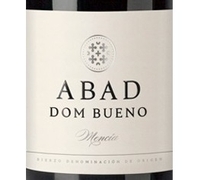 Beirzo, located in the northwest corner of Castilla y León bordering Galicia and Asturias, is home to the Mencía grape, from which this wine is made. With is weight and concentration, it’s a well-priced example of what that variety is capable of delivering. … Read more
Beirzo, located in the northwest corner of Castilla y León bordering Galicia and Asturias, is home to the Mencía grape, from which this wine is made. With is weight and concentration, it’s a well-priced example of what that variety is capable of delivering. … Read more
Cecchi, Chianti Classico Riserva DOCG (Tuscany, Italy) “Riserva di Famiglia” 2016
($48, Terlato): 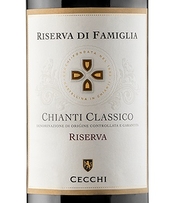 Cecchi is one of the great names for Tuscan wines, especially Chianti Classico. Combine their talents with a great vintage, like 2016, and, unsurprisingly, you have a truly fine wine. It conveys both the charm and power of a Chianti Classico Riserva reinforced and amplified by great acidity, a characteristic of the vintage. … Read more
Cecchi is one of the great names for Tuscan wines, especially Chianti Classico. Combine their talents with a great vintage, like 2016, and, unsurprisingly, you have a truly fine wine. It conveys both the charm and power of a Chianti Classico Riserva reinforced and amplified by great acidity, a characteristic of the vintage. … Read more
Cecchi, Chianti Classico DOCG Gran Selezione (Tuscany, Italy) “Valore di Famiglia” 2016
($65): 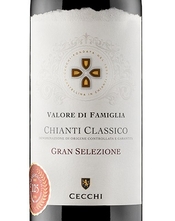 Gran Selezione is a relatively new category of Chianti Classico. It sits at the pinnacle of the quality pyramid, above Riserva. Regulations require, among other things, that the grapes come entirely from the producers’ vineyards — no purchased fruit is allowed — and that the wine must be aged for 30 months before release, compared to 24 months for Riserva. … Read more
Gran Selezione is a relatively new category of Chianti Classico. It sits at the pinnacle of the quality pyramid, above Riserva. Regulations require, among other things, that the grapes come entirely from the producers’ vineyards — no purchased fruit is allowed — and that the wine must be aged for 30 months before release, compared to 24 months for Riserva. … Read more
Masciarelli, Montepulciano d’Abruzzo Riserva DOC (Italy) “Marina Cvetic” 2016
($27, Vintus): 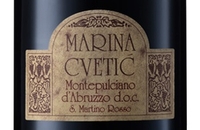 Montepulciano d’Abruzzo has nothing to do with Vino Nobile di Montepulciano. The former is a grape, the latter a village whose wines, curiously enough, are made from Sangiovese. The quality and price of Montepulciano d’Abruzzo is vast, from thin swill to monumental wine, which makes it a mine field when selecting wines. … Read more
Montepulciano d’Abruzzo has nothing to do with Vino Nobile di Montepulciano. The former is a grape, the latter a village whose wines, curiously enough, are made from Sangiovese. The quality and price of Montepulciano d’Abruzzo is vast, from thin swill to monumental wine, which makes it a mine field when selecting wines. … Read more
Masciarelli, Colline Teramane DOCG (Abruzzo, Italy) “Marina Cvetic Iskra” 2015
($35, Vintus): 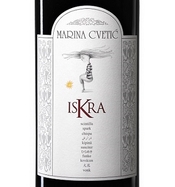 Colline Teramane is the sole DOCG (Italy’s highest wine category) in Abruzzo, and shows the heights the Montepulciano grape can achieve when planted in the right place by the right people. This one, unsurprisingly, since it comes from Mascareilli, one of the region’s top producers, is stunning. … Read more
Colline Teramane is the sole DOCG (Italy’s highest wine category) in Abruzzo, and shows the heights the Montepulciano grape can achieve when planted in the right place by the right people. This one, unsurprisingly, since it comes from Mascareilli, one of the region’s top producers, is stunning. … Read more
Claudie Jobard, Rully (Côte Chalonnaise, Burgundy, France) Montagne La Folie 2018
($27, Jeanne-Marie de Champs Selection): 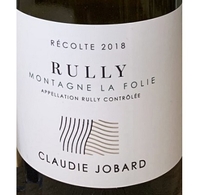 No doubt about it, this is a great wine. People, my editor included, will be startled by my awarding 95 points to a village Rully, which just exemplifies the problem of numerical rating. On an absolute scale, is this a 95 Point wine, comparable to a Grand Cru from the Côte d’Or? … Read more
No doubt about it, this is a great wine. People, my editor included, will be startled by my awarding 95 points to a village Rully, which just exemplifies the problem of numerical rating. On an absolute scale, is this a 95 Point wine, comparable to a Grand Cru from the Côte d’Or? … Read more
Domaine Bart, Marsannay (Côte de Nuits, Burgundy, France) Chardonnay Musqué Les Favières 2018
($35, Jeanne-Marie de Champs Selection): 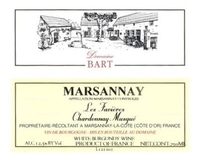 Domaine Bart, one of my favorite producers, flies under the radar. Even their stunning Bonnes Mares fails to get the accolades it deserves. They are best known for their array of reds from Marsannay, a village whose wines may lack cachet, but in the right hands deliver spectacular quality at an easy-on-the wallet price. … Read more
Domaine Bart, one of my favorite producers, flies under the radar. Even their stunning Bonnes Mares fails to get the accolades it deserves. They are best known for their array of reds from Marsannay, a village whose wines may lack cachet, but in the right hands deliver spectacular quality at an easy-on-the wallet price. … Read more
Merry Edwards, Russian River Valley (Sonoma County, California) Pinot Noir Flax Vineyard 2017
($63):  One of the many attributes of Merry Edwards’ Pinot Noirs, is how different they taste. Her range of vineyard-designated wines show the importance of site. The 2017 Flax Vineyard Pinot Noir is almost at the opposite pole compared to the Bucher Vineyard. … Read more
One of the many attributes of Merry Edwards’ Pinot Noirs, is how different they taste. Her range of vineyard-designated wines show the importance of site. The 2017 Flax Vineyard Pinot Noir is almost at the opposite pole compared to the Bucher Vineyard. … Read more
Merry Edwards, Russian River Valley (Sonoma County, California) Pinot Noir Bucher Vineyard 2017
($63):  The Bucher Vineyard Pinot Noir, a new addition to the Merry Edwards portfolio, could be considered Heidi von der Mehden’s “baby.” Heidi, who took over as winemaker with the 2018 vintage, had been working with Merry Edwards since 2015 and was given the responsibility for making the 2016 Bucher Pinot Noir, their first. … Read more
The Bucher Vineyard Pinot Noir, a new addition to the Merry Edwards portfolio, could be considered Heidi von der Mehden’s “baby.” Heidi, who took over as winemaker with the 2018 vintage, had been working with Merry Edwards since 2015 and was given the responsibility for making the 2016 Bucher Pinot Noir, their first. … Read more
Merry Edwards, Russian River Valley (Sonoma County, California) Pinot Noir Olivet Lane Vineyard 2017
($68): 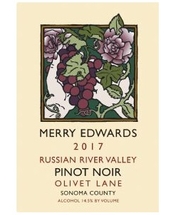 First planted in 1973 by the Pellegrini family, the Olivet Lane Vineyard was one of the first in the Russian River Valley devoted to Pinot Noir and Chardonnay. Merry Edwards has used Pinot Noir from Olivet Lane for a single-vineyard bottling since the founding of her winery in 1997. … Read more
First planted in 1973 by the Pellegrini family, the Olivet Lane Vineyard was one of the first in the Russian River Valley devoted to Pinot Noir and Chardonnay. Merry Edwards has used Pinot Noir from Olivet Lane for a single-vineyard bottling since the founding of her winery in 1997. … Read more
Bodegas Pinea del Duero, Ribera del Duero (Spain) Tempranillo “Pinea” 2017
($150, WineSmith Company):  The packaging and verbiage, 14.9 percent stated alcohol, the over-sized 2.6-pound (empty) bottle and the back label informing that the wine was aged in” very special French oak” for two years, put me off. But I remember how impressive their second wine, simply labeled “17” was. … Read more
The packaging and verbiage, 14.9 percent stated alcohol, the over-sized 2.6-pound (empty) bottle and the back label informing that the wine was aged in” very special French oak” for two years, put me off. But I remember how impressive their second wine, simply labeled “17” was. … Read more
Pazos de Rey, Monterrei DO (Galicia, Spain) Godello “Pazo de Monterrey” 2019
($15, Aviva Vino):  Do. Not. Miss. This. Wine. Made from an obscure grape (but not for long), from an obscure region (also not for long), this wine is a bargain. The small, relatively unknown Monterrei DO (pronounced—Mon-ter-rey) is located in the southern part of Galicia near the Portuguese border. … Read more
Do. Not. Miss. This. Wine. Made from an obscure grape (but not for long), from an obscure region (also not for long), this wine is a bargain. The small, relatively unknown Monterrei DO (pronounced—Mon-ter-rey) is located in the southern part of Galicia near the Portuguese border. … Read more
Bodegas Caro, Mendoza (Argentina) “CARO” 2017
($60, Taub Family Selections): 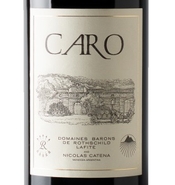 The name of the bodega and its flagship wine comes from the first two letters of the last names of the principals involved in this collaborative effort: Nicolas Catena and Barons de (Lafite) Rothschild. With those two wineries involved how could their flagship wine not be consistently sensational? … Read more
The name of the bodega and its flagship wine comes from the first two letters of the last names of the principals involved in this collaborative effort: Nicolas Catena and Barons de (Lafite) Rothschild. With those two wineries involved how could their flagship wine not be consistently sensational? … Read more
Résonance, Willamette Valley (Oregon) Pinot Noir 2018
($35): 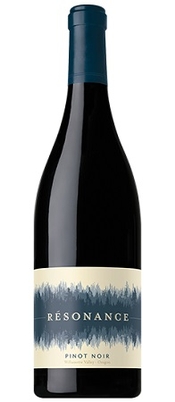 In 2013, the venerable Beaune-based négociant, Maison Louis Jadot, made their first acquisition outside of Burgundy when they purchased the 20-acre Resonance vineyard located in the Yamhill-Carlton AVA. It was a unique site since it had been planted almost exclusively to Pinot Noir, and had always been farmed organically and without irrigation, according to Pierre-Henri Gagey, the President of Maison Louis Jadot. … Read more
In 2013, the venerable Beaune-based négociant, Maison Louis Jadot, made their first acquisition outside of Burgundy when they purchased the 20-acre Resonance vineyard located in the Yamhill-Carlton AVA. It was a unique site since it had been planted almost exclusively to Pinot Noir, and had always been farmed organically and without irrigation, according to Pierre-Henri Gagey, the President of Maison Louis Jadot. … Read more
Talbott Vineyards, Santa Lucia Highlands (Monterey County, California) Chardonnay Sleepy Hollow Vineyard Estate Grown 2017
($42):  David Coventry, the head winemaker at Talbott explained during a webinar in the excellent SommCon Geographical Digest Series (a collaboration between The Somm Journal and National Geographic), that the Santa Lucia Highlands AVA is truly a cool climate area because of its proximity to the ocean. … Read more
David Coventry, the head winemaker at Talbott explained during a webinar in the excellent SommCon Geographical Digest Series (a collaboration between The Somm Journal and National Geographic), that the Santa Lucia Highlands AVA is truly a cool climate area because of its proximity to the ocean. … Read more
Charles Heidsieck, Champagne (France) Blanc de Blancs, Brut NV
($96, Folio Fine Wine Partners): Charles Heidsieck is really on their game with their current releases.  The back label informs that the grapes came mainly from the Grand and Premier Cru villages, respectively, of Oger and Vertus in the Côte des Blancs, the region’s premier locale for Chardonnay. … Read more
The back label informs that the grapes came mainly from the Grand and Premier Cru villages, respectively, of Oger and Vertus in the Côte des Blancs, the region’s premier locale for Chardonnay. … Read more
Charles Heidsieck, Champagne (France) Rosé Réserve NV
($87, Folio Fine Wine Partners):  Charles Heidsieck is a name to remember when buying Champagne. For some bizarre reason, it seems to receive less buzz than many of the other major houses. But that is changing under the Descours family ownership since 2011. … Read more
Charles Heidsieck is a name to remember when buying Champagne. For some bizarre reason, it seems to receive less buzz than many of the other major houses. But that is changing under the Descours family ownership since 2011. … Read more
Tamarack Cellars, Columbia Valley (Washington) “Firehouse Red” 2017
($20):  Given the blend, Syrah (33%), Cabernet Sauvignon (27%), Merlot (18%), Cabernet Franc (11%), Mourvèdre (3%), and 2% each of Grenache, Counoise, Sangiovese and Petit Verdot, they could have called it “Kitchen Sink Red.” But it works. Fruit flavors mix with savory ones. … Read more
Given the blend, Syrah (33%), Cabernet Sauvignon (27%), Merlot (18%), Cabernet Franc (11%), Mourvèdre (3%), and 2% each of Grenache, Counoise, Sangiovese and Petit Verdot, they could have called it “Kitchen Sink Red.” But it works. Fruit flavors mix with savory ones. … Read more
Mullan Road Cellars, Columbia Valley (Washington) Red Wine Blend 2016
($45): 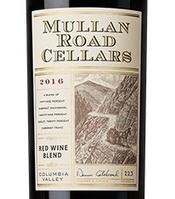 Unsurprisingly, wine webinars in the era of Covid-19 are hit or miss. One that I highly recommend is the SommCon Geographical Digest Series, a collaboration between The Somm Journal and National Geographic, during which I tasted this wine, which was previously unknown to me. … Read more
Unsurprisingly, wine webinars in the era of Covid-19 are hit or miss. One that I highly recommend is the SommCon Geographical Digest Series, a collaboration between The Somm Journal and National Geographic, during which I tasted this wine, which was previously unknown to me. … Read more
Domaine du Château de Messey, Mâcon Cruzille (Mâconnais, Burgundy, France) Clos des Avoueries 2017
($39, Seaview Imports):  The Mâconnais is becoming to “go-to” place for affordable white Burgundy. The region has three tiers, which, in ascending order of prestige, are Macon, Macon-Villages, and, at the top, Macon with the name of a village, such as Cruzille, appended to it. … Read more
The Mâconnais is becoming to “go-to” place for affordable white Burgundy. The region has three tiers, which, in ascending order of prestige, are Macon, Macon-Villages, and, at the top, Macon with the name of a village, such as Cruzille, appended to it. … Read more
Domaine Antonin Guyon, Gevrey-Chambertin (Burgundy, France) “La Justice” 2017
($85, Taub Family Selections):  Domaine Antonin Guyon is a name you can trust. They make incredibly consistent wines from Grand Cru to their village wines, such as this one, that lies on the wrong side of the road. La Justice is one of the rare vineyards that lies on the eastern side of the RN974, the main north-south road in Burgundy, to be awarded a village designation instead of just a regional appellation. … Read more
Domaine Antonin Guyon is a name you can trust. They make incredibly consistent wines from Grand Cru to their village wines, such as this one, that lies on the wrong side of the road. La Justice is one of the rare vineyards that lies on the eastern side of the RN974, the main north-south road in Burgundy, to be awarded a village designation instead of just a regional appellation. … Read more
